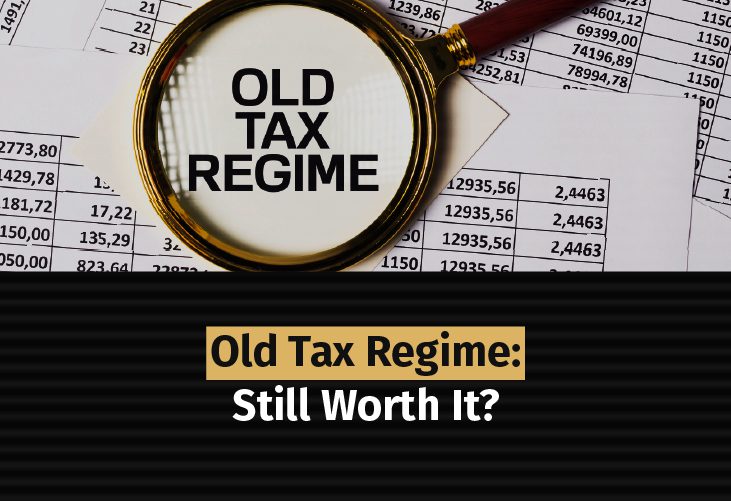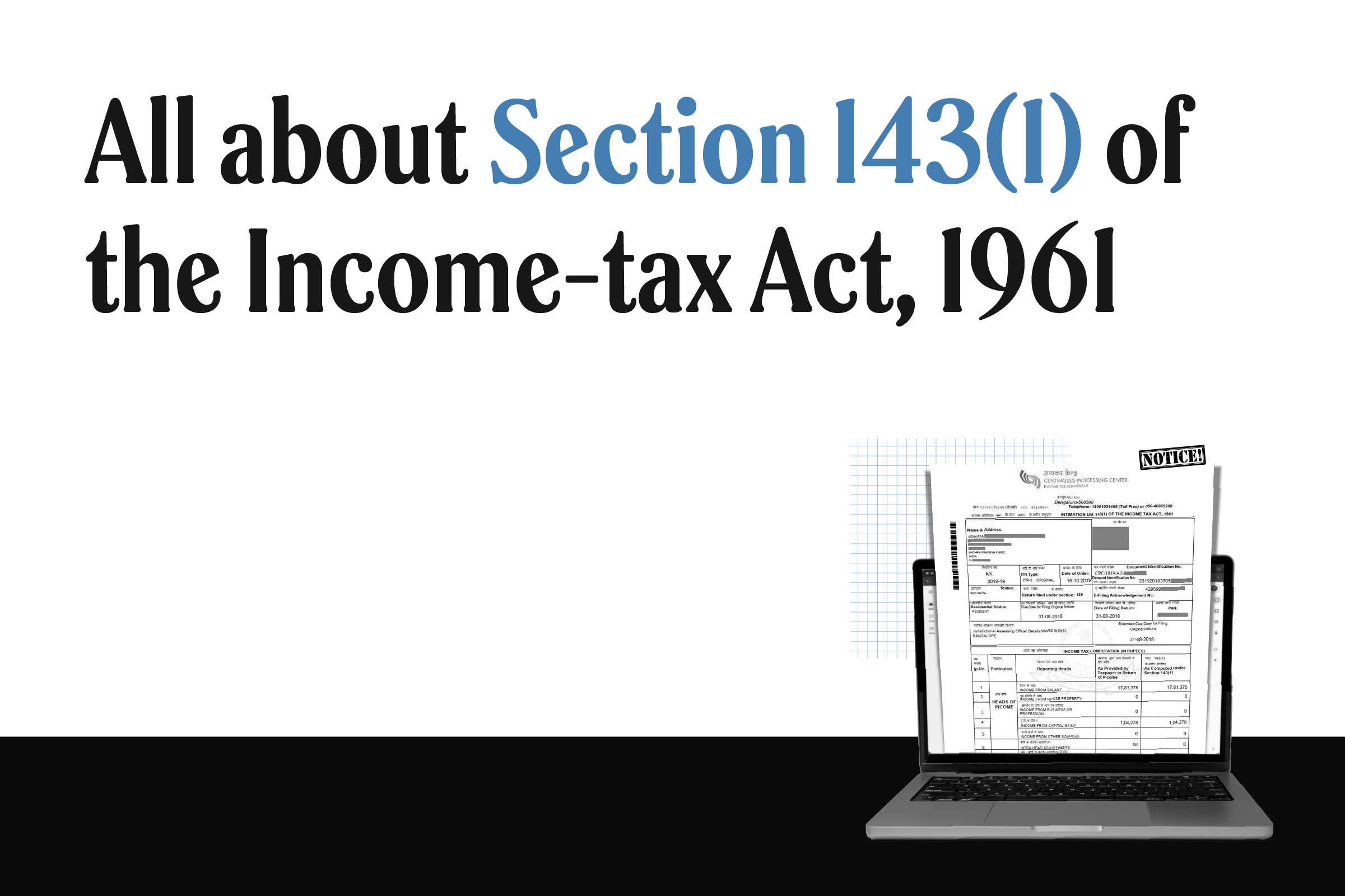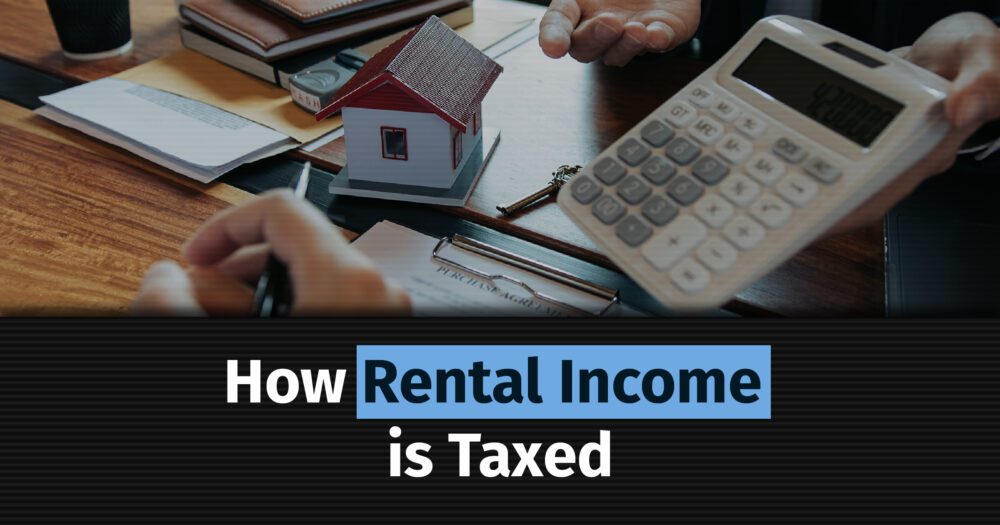When it comes to personal tax planning, taxpayers are often in a dilemma to decide whether to opt for the new tax regime or to continue with the existing tax regime. Old regime is mostly preferred by those who want to reduce their taxable income by maximising the available exemptions and deductions. The new regime is now the default tax regime, However, the eligible taxpayers can opt out of the new tax regime and choose to be taxed under the old tax regime.
Let’s understand the benefits of the old tax regime in a simplified manner.
What is Old Tax Regime?
The old tax regime works in the best interest of your financial well-being if you aim to achieve long-term financial goals, such as wealth creation through investments in tax-saving instruments, securing health and life insurance by paying premiums, covering children’s school fees, or purchasing a house with a home loan. You are allowed to claim approximately 70 deductions and exemptions under the old regime.
Some of the deductions available under the old regime are illustrated below:
-
- Section 80C: Allows deduction of up to ₹1.5 lakhs on investments in various tax saving schemes, such as ULIP, EPF, PPF, ELSS, etc.
- Section 80D: Allows deduction of up to ₹ 50k on medical expenses incurred for self, spouse, parents, and dependent children.
- Section 80 TTA: Allows deduction of up to ₹10k on interest income from savings accounts and post office deposits.
- Section 80G: Allows deduction of either 50% or 100% of the donated amount to certain approved charitable institutions, relief funds, and NGOs.
- House Rent Allowance (HRA): Allows deduction of the actual amount of HRA received or 50% of the basic salary, whichever is lower.
- Leave Travel Allowance (LTA): Allows deduction of the actual amount of LTA received or 40% of the basic salary, whichever is lower.
- Section 87A Rebate: You can get a tax rebate of₹12.5k if your income is up to ₹5 lakhs.
- Standard Deduction: Salaried individuals can avail tax deductions of up to ₹50k.
- Section 80CCD(1B): Additional deduction of ₹50,000 for contributions to the National Pension System (NPS).
- Section 10(10D): Tax exemption for the maturity proceeds from life insurance policies if certain conditions are met.
Key Benefits of Opting for the Old Regime
- Incentives for Savings and Investments: The old tax regime offers dual benefit of tax saving and investment, particularly through deduction under section 80C, section 80CCA, 80CCD(1B), etc.. Investing in schemes like Public Provident Fund (PPF), National Savings Certificates (NSC), or Equity-Linked Saving Schemes (ELSS) not only reduce your tax liability but also helps you build a corpus over time for a secured future. However, the new regime does not incentivise taxpayers based on tax-saving investments.
- Decisions based on Financial Goals: Old tax regime offers flexibility to strategically utilise available deductions based on your financial goals. For example:
- If you are focused on planning for retirement, you can claim a deduction under Section 80CCC for pension contributions.
- Example: if a taxpayer is saving primarily for children’s education, investing in ELSS funds (80C) may align well with long-term objectives.
- Beneficial for Property Owners: Old tax regime offers capital gains exemptions under Sections 54, 54EC, and 54F for long-term capital gains, particularly on the sale of property. Additionally, if you are financing your home, you can claim deductions for both interest and principal repayments.
If you have taken a home loan, you can claim a deduction on interest repayment under Section 24 and on principal repayment under Section 80C.
- Beneficial for Salaried Individuals: Old tax regime offers several deductions such as House Rent Allowance (HRA), Leave Travel Allowance (LTA), and the standard deduction. Additionally, deductions under Section 80C for tax-saving investments and Section 80D for health insurance premiums enable individuals to plan their finances effectively and maximise tax savings.
- Beneficial for Existing Taxpayers: Old tax regime is a comfortable and reliable option for many taxpayers, especially those who prefer a disciplined approach to managing their finances. It encourages them to save, invest, and spend wisely to maximise their deductions.
- Beneficial for the Family of a Pensioner: The old tax regime allows family members receiving a pension after the pensioner’s death to claim deductions under Section 57. The family of a deceased pensioner can reduce their tax liability on pension income by claiming a deduction equal to one-third of the family pension received, or ₹15,000, whichever is lower.
Case Scenario
Let’s breakdown the benefits of old tax regime with the help of a case scenario:
Mr. Rohan’s Earnings and Investments:
- Annual Income: ₹12,00,000
- Standard Deduction: ₹50,000
House Rent Allowance (HRA):
- Pays ₹30,000 per month for rent
- Exemption of ₹1,50,000 (based on eligible calculations)
Investment under Section 80C:
- Invests ₹1,50,000 in a Public Provident Fund (PPF)
Health Insurance Premium:
- Pays ₹25,000
- Qualifies for an additional deduction of ₹25,000 under Section 80D
Calculation of Taxable Income (as per old regime):
- ₹12,00,000 (income) – ₹50,000 (standard deduction) – ₹1,50,000 (HRA) – ₹1,50,000 (PPF) – ₹25,000 (health insurance)
Total Taxable Income: ₹8,50,000
Tax Liability: ₹85,800
Calculation of Taxable Income (as per new regime):
- ₹12,00,000 (income) – ₹50,000 (standard deduction)
Taxable Income: ₹11,50,000.
Tax Liability: ₹93,600
Note: Under the new tax regime, he cannot claim any deductions for his investments under Section 80C or health insurance premium under Section 80D.
The old tax regime has significantly reduced Mr. Rohan’s tax liability by ₹7,800. Hence, old tax regime is more beneficial in this case.
Conclusion
The old tax regime offers a range of tax-saving benefits, promotes savings and investments, and provides flexibility for customized tax planning. The choice between the two regimes may vary from person to person. It is advisable to conduct a comparative evaluation and analysis of both tax regimes before selecting the most beneficial option.
Taxpayers can broadly estimate and compare their tax liability under the new and old tax regimes using the Income and Tax Calculator available on the Income Tax Portal as well as on 1 Finance app.
A qualified financial advisor can help you optimise the benefits available under the Old Regime for effective tax planning. To optimise your taxes, download the 1 Finance app and book a consultation with a qualified financial advisor for a seamless, hassle-free tax planning experience.







